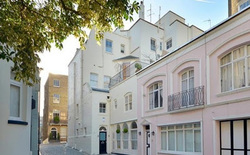 Demand for flats and houses to rent in central London looks to have slowed as a consequence of record high rents, research shows. Although demand for properties to rent in Fitzrovia, Marylebone, Belgravia, among other central London areas remains as high as ever, the surge in rental values in primary areas has priced many tenants out of living in the heart of the capital, forcing them to move out to cheaper regions instead. Virginia Skilbeck, Lettings Director at Douglas & Gordon, commented: “One of the biggest changes we are seeing is the reduced demand in prime central London as tenants are forced to move further out to save money.” Douglas & Gordon report that while many corporate tenants continue to house themselves in the best and most expensive parts of central London, there is a growing trend of much greater demand from corporate tenants in the peripheral areas as many companies have reduced accommodation allowances. This is fuelling greater demand for properties to rent in St. John's Wood, Regent’s Park, Primrose Hill, among other parts of Westminster and surrounding areas, which are located on the boarder of central London. Andrew Ellinas, Director at Sandfords, commented: “The City of Westminster has within its borders some of the most desirable real estate in the world from Buckingham Palace down, and includes most of Sandfords' home turf in Marylebone, Regent's Park, Primrose Hill and St John's Wood.” Chesterton Humberts reports that its supply of rental properties in central London is 12 per cent ahead of this time last year, reflecting the fact that tenant demand has ‘softened’ as a consequence of cuts in corporate budgets, City redundancies and cheap mortgage deals which are encouraging more people to escape the rental market by purchasing property. Nick Barnes, Head of Research at Chesterton Humberts, said: “The prime residential lettings market remains active, however with buy-to-let landlords bringing more stock onto the market, tenants now have a wider choice and consequently greater bargaining power. This is forcing landlords to be more flexible in order to attract and retain tenants, which is often resulting in downwards pressure on rents.” Many landlords in central London have reportedly responded to lower demand from tenants by trying harder to renew existing tenancy agreements, without increasing rents. In some cases, they are reducing rents altogether. Greater demand for rental properties outside of central London is helping to push rental values – currently at an historical high – ever higher. Consequently, more investors are expected to add to their buy-to-let portfolios, by acquiring more homes in periphery areas in order to take advantage of greater activity among tenants. But with rents rising, there are growing signs that more would-be tenants are attempting to escape the rental market altogether, by gaining a first foot on the housing rung, according to new figures. According to data compiled by LSL Property Services, the volume of debut homeowners in London almost doubled in the first four months of this year partly, due in part to easier access to mortgages. The number of first-time buyers in January to April was 92 per cent higher than the same period last year, according to LSL Property Services. They paid an average price of £195,041, 3.6 per cent higher than a year ago, and took out an average mortgage of £154,233, almost twice the level in the rest of the country. David Newnes, director of estate agency group LSL Property Services, commented: “Improvement in the availability of high loan-to-value mortgages allowed more first-time buyers to realise their dream of home ownership. Increased lender confidence has led to lower rates and a wider range of first-time buyer mortgages.” However, the hike in first-time buyer activity could be short lived. This is because the rise in buyer demand is expected to push house prices higher, pricing many would-be purchasers out of the market, forcing them to rent property instead; an attractive proposition for landlords investing in property for the long-term.
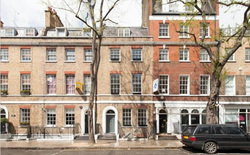 Despite a marginal slowdown in demand for properties for sale in central London in late February and March, central London still remains one of the most desirable places to invest in property. Following an extremely good start to the year, the early spring period was rather disappointing for the housing market in central London, with the volume of serious applicants looking at houses and apartments for sale in central London falling. But the slight decline in demand for properties in central London was not due to the region no longer being a highly desirable place to live or invest in property, but was rather owed to the adverse weather conditions, according to Beaney Pearce. In fact, the central London estate agents actually report that, with weather conditions rapidly improving, far more people are actively looking to acquire homes in central London once more. “The absolutely ghastly weather accounted for a great deal of the reluctance [in demand from buyers], said a spokesperson for Beaney Pearce. “May and early June however have seen a very marked increase in activity with a healthy level of sales been agreed.” Beaney Pearce’s findings are supported by the latest data from theRoyal Institution of Chartered Surveyors (RICS) which shows that residential property transactions rose in London, along with other parts of the country Transactions in May were at their highest level in three-and-a-half years as house buyers took advantage of record low interest rates, according to RICS. Surveyors sold an average of 17.9 homes in the three months to May – the highest level since January 2010, although still significantly below the levels hit six years ago. What’s more, sales are expected to continue their increase over the next three months with a net balance of 35 per cent more respondents predicting transaction levels will grow, up from 26 per cent. Peter Bolton King, RICS Global Residential Director, commented: “May was an interesting month for the housing market. More people decided to get out there and view property and more transactions went through than in quite some time.” The sharp rise in housing activity demonstrates that more buyers are taking advantage of favourable market conditions, helping to push property values higher in the process. UK home prices rose by 2.6 per cent in the three months to May compared to the same period last year – the biggest rise since September 2010, according to Halifax. The mortgage lender says that home prices rose by 0.4 per cent in May alone, though down from the 1.1 per cent rise recorded in April. “Despite these recent signs of improvement in the housing market, the subdued economic background and the accompanying weak income growth continue to be a significant constraint on housing demand and activity,” said Halifax economist Martin Ellis. In spite of Mr Ellis’ concerns, the investment prospects for the housing market across many parts of the country, particularly in London, look rather buoyant, supported by various Government schemes such as Help to Buy. Very few investments compare to the safe nature of investing in central London’s property market, according to leading estate agents Sandfords. Andrew Ellinas, Director at Sandfords, said: “Property in London has intrinsic value that is not dependent on buyer sentiment but its use as a place to live and do business in the most vibrant and cosmopolitan city in the world.” With demand for properties in central London expected to increase further, far outstripping housing supply in the process, very few people would argue against investing in the capital’s housing market at the moment.
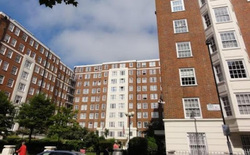 Rental values in central London rose again during the first quarter of this year, a new report shows. According to Cluttons, rents in central London rose by an average of 1.7 per cent in the first quarter of this year to reach £1,016 per week. Although this figure remains broadly unchanged from this time last year, Cluttons does report that the volume of applicants with higher budgets is in decline, a trend which is expected to persist over the coming months. With rental values in central London now at a record high, on the back of greater competition for properties to rent in central London, a growing number of tenants are reportedly being drawn to peripheries of prime central London in zones 2 and 3. Sue Foxley, head of research at Cluttons, said: “A growing number of tenants to look further afield for cheaper accommodation. As a result we are seeing migration out to the periphery of prime central London , to zones 2 and 3, where rents are significantly lower than the prime core.” With more tenants now spreading their wings to focus on lower priced properties in zones 2 and 3, as they seek to minimise outgoings, particularly as stubborn inflation continues to erode real incomes, demand for properties to rent in north west London is rising. St John’s Wood, Primrose Hill and Maida Vale are just some of the areas attracting a greater level of interest from renters, helping to push rental values in these areas higher in the process. This in turn is driving higher demand among investors for buy-to-let properties in these regions, reducing the volume of properties for sale in St John's Wood, Primrose Hill and Maida Vale in the process, according to leading estate agents Sandfords. Andrew Ellinas, Director at Sandfords, commented: “The success of the prime central London property market over the last five years is creating a wave of price rises in nearby areas as people move further afield in search of value. Areas such as St John's Wood, Primrose Hill and Maida Vale, traditionally regarded as outside the prime central London zone, are now developing into an 'outer prime London' market.” The recent rise in the volume of people looking to rent property outside of central London, means that more landlords in the heart of the capital are now becoming more flexible with their rents in order to lure tenants back into prime central London areas. Competition to attract tenants has not been helped by a 12 per cent rise in housing supply in central London over the past year, according to Chesterton Humberts. The company’s latest Prime London Lettings Report shows that buy-to-let continues to grow and now accounts for 13 per cent of all UK mortgages. But the figures also reveal that tenant demand in central London has softened due to a reduction in corporate relocation budgets, financial services redundancies and increased mortgage availability, placing downward pressure on rental values in the process. Some landlords in central London have reportedly responded to recent trends by offering to freeze rents for tenants and sometimes even reduce them altogether. Nick Barnes, Head of Research at Chesterton Humberts, commented: “The prime residential lettings market remains active, however with buy-to-let landlords bringing more stock onto the market, tenants now have a wider choice and consequently greater bargaining power. This is forcing landlords to be more flexible in order to attract and retain tenants, which is often resulting in downwards pressure on rents.” Despite greater flexibility among some landlords in central London, as far as rents are concerned, some letting experts expect to see rental demand for homes in popular north west London areas continue to grow. Adam Feather of north London based estate agents Robert Anthony said: “Although central London remains the most popular place to live in the capital, rents remain extremely high, and so it is easy to see why more people should want to rent a home in north west London instead.” With rental values in north west London a fraction of those being commanded in prime central London, not many people would disagree with Mr Feather.
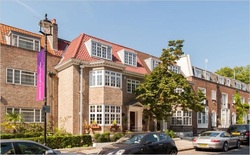 Anyone searching for properties for sale in Central London will find that the list of homes available is falling, as a growing number of investors snap up rental investments in the capital. What’s more, the number of homes on the market that have had their asking price reduced at least once has fallen to its lowest level since late 2010 as confidence returns to the housing market, according to the latest research from property website Zoopla.co.uk. The proportion of properties currently on the market with a reduced asking price now stands at 31.5 per cent, compared to 36.7 per cent a year ago. This suggests that fewer sellers are feeling pressured to cut their asking price in order to achieve a sale. This is particularly the case as far as houses and flats for sale in central London are concerned, with demand from investors soaring. Lawrence Hall of Zoopla.co.uk comments: "The number of price-reduced properties has fallen to its lowest since early 2010 indicating growing confidence in the market" With residential property market conditions in London rapidly improving, more investors are actively looking to either enter the buy-to-let market or add to their existing property portfolios, in order to take advantage of the rise in the number of people looking for houses and flats to rent in central London. The first ever Sequence lettings index shows that the number of new applicants registering with the company in order to rent a home in March increased by 21 per cent compared to the previous month, while the volume of properties to rent only increased by five per cent during the same period. Stephen Nation, Head of Lettings at Sequence, commented: "We have seen a strong seasonal uplift in demand for rented accommodation with over 12% growth in the number of new tenant applicants, viewings and agreed tenancies." He added: "Monthly Rents of £1,375 in London remain almost double the national average of £704." Aside from solid rental returns, many property investors also want to take advantage of rapidly increasing home values in the capital, particularly in prime central London, where prices are appreciating by an average of £383 per day, according to Marsh & Parsonsin its Residential Investment Monitor Q1 2013. Following a slowdown in both the sales and lettings markets during the fourth quarter of last year, the property firm report that the prime central London residential market has turned a corner, with positive growth recorded across all London regions, led by gains in prime central London. Data provided by Marsh & Parsons shows that the average price of a flat in prime central London breached the £1 million mark for the first time, while the average price for prime residential property as a whole reached a new historic high of £1.53 million in Q1, leaving prices 6.1% above the previous market peak of Q3 2007. This translates to an average increase of £383 per day. "Prime Central London is once again experiencing robust price growth, driven primarily by the supply drought and strong domestic demand, aided by a greater take up of the historically low mortgage rates," said Sue Foxley, Head of Research at Cluttons. Moving forward, the housing market in prime central London, having successfully withstood the worst of the economic turbulence, is expected to experience further robust price growth, driven primarily by the shortage of homes on the market and historically low mortgage rates. "Prime central London property is largely immune from short term fluctuations," said Andrew Ellinas of leading estate agents Sandfords. "The main reason is that a property in London has intrinsic value that is not dependent on buyer sentiment but its use as a place to live and do business in the most vibrant and cosmopolitan city in the world." Some leading property experts expect to see home values in prime central London increase by in excess of 20 per cent over the next five years, and very few people would argue against that forecast.
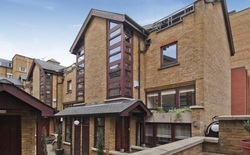 Rents have continued to soar in the capital's most desirable areas, fuelled by growing demand for properties to rent in central London, owed in part to a high level of fierce competition from frustrated would-be home buyers struggling to gain a foot on the housing ladder. The typical rent in London rose by 6.2 per cent in February compared with a year earlier, according to the data from lettings network LSL Property Services - which owns chains such as Your Move and Reeds Rains. The hike in rental values is largely due to the lack of homes on the market in relation to demand. LSL director David Newnes said: "In the longer-term, the supply of rental homes will have to increase considerably to prevent monthly rent rises when the rental market re-enters its traditional peak season." The property shortage in the rental market is owed mainly to a lack of house building, while many foreigners, who make up a significant share of those buyers taking advantage of attractive flats and houses for sale in central London, generally opt not to rent their homes out. "Wealthy foreign buyers who own properties in these areas [central London] rarely rent them out. This has cut the pool of homes available to renters and contributed to sharp rental prices increases," said Ludlow Thompson director Stephen Ludlow. New research by Ludlow Thompson shows that the average cost of primarily located flats and houses to rent in central London has now soared past the £5,000 per month mark. New data published by Ludlow Thompson reveals that rents in SW1, which includes the elite enclaves of Belgravia and Knightsbridge, are the highest, averaging £6,171 a month. This is followed by W1, which covers Mayfair, Marylebone and Soho, where rents are £5,493, while rents in Chelsea, SW3, have reached £5,442. The success of the prime central London property market over the last five years is creating plenty of fresh buy-to-let investment opportunities, according to leading estate agents Sandfords. The company is bullish on the private rented sector, pointing to the latest census figures that show the rising generation is moving to city centres to live. "They [people] cannot afford to buy and are increasingly deciding to rent long-term," said Sandfords Director, Andrew Ellinas. He added: "The predicted capital growth in prime central London combined with the rental growth caused by the high demand and relatively low supply is a clear investment opportunity." The success of the housing market in central London is likely to have a positive knock-on effect on the wider property market in the capital, particularly in those secondary areas on the edge of central London, such as St John's Wood, Regent's Park and Primrose Hill. Brendan Cox, Managing Director of Waterfords estate agents, commented: "There is no doubt that London has to be one of the top investment destinations for anyone looking for a safe-haven asset right now." As rents soar and deposits to buy property become even further out of reach, the government needs to look seriously at how it can help more people buy property in central London, such as make housing more affordable. In the meantime, landlords will continue to reap the rewards of existing market conditions.
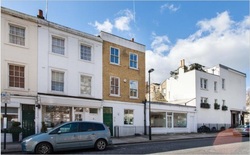 Theon-going shortage of residential properties in prime central London in relation to record high demand, fuelled by a flurry of international buyers, is continuing to push property prices higher. The latest Knight Frank Market Update shows that the average price of a home in the heart of the capital increased by 0.9 per cent in January, compared to just 0.2 per cent across the UK as a whole, taking the annual rise in prime central London to 8.4 per cent. Demand for residential properties in central London has been boosted in recent months by the draft Finance Bill which gave some clarification on the ARPT, which helped offset the downturn in sales witnessed for much of last year. The weak pound, solid rental returns and good prospect for capital growth have also helped to boost demand, particularly among foreign buyers. Peter Rollings, CEOMarsh & Parsons, commented: "The relative shortage of stock sees house prices in the capital setting new records according to Nationwide. Demand is coming from both home and abroad and is set to continue with the much anticipated return to more seasonable Spring-like weather." This strong demand in central London is expected to ripple out to other parts of London, especially in North West London, where some of the most desirable districts in the capital are situated. The concern is that there are simply not enough properties for sale in North West London, due to a general housing shortage. Andrew Ellinas, Director of Sandfords, said: "The success of the prime central London property market over the last five years is creating a wave of price rises in nearby areas as people move further afield in search of value." Ellinas reports that there is a particular shortage of properties for sale in St. John's wood, Primrose Hill and Maida Vale, traditionally regarded as outside the prime central London zone. "These areas are now developing into an 'outer prime London' market," he added. Strong prospects for capital growth is an attractive proposition for property investors, but it is the lure of solid rental returns that far outstrip low saving interest rates, which ultimately appeals to investors, thanks to strong demand for properties to rent in North West London. David Whittaker, managing director at Mortgages for Business, said: "Tenant demand for residential property is ballooning thanks to the lack of mortgages available to first-time buyers. Every month more and more would-be buyers are being forced to rent, and this is pushing up demand to astronomical levels, producing very attractive gross yields for landlords as a result." In fact, 61 per cent of private and social housing tenants in England do not believe that they will ever be able to purchase a home, mainly due to affordability constraints, according to Castle Trust. Sean Oldfield, chief executive officer, Castle Trust, said: "Many people are either unable to get on the property ladder or stuck in their current home despite interest rates still being at an all-time low. Schemes like the Government's Funding for Lending are helping to boost borrowing options but the market still needs innovative lending products." Castle Trust's analysis shows that owner occupation in England has fallen by 200,000 from 14.6 m in 2008 to 14.4m in 2012. Its data also indicates that there has been an increase of 23 per cent in the number of people who are choosing to rent in the private sector, with 3.1 million renters in 2008 rising to 3.8m renters in 2012; the rise in rental demand is a highly attractive proposition to buy-to-let investors.
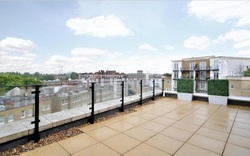 With tenants paying an average of £64 a month more than they were last year to rent property in the capital, investors have moved swiftly to cater for growing rental demand, particularly in central London. With more tenants competing for properties to rent in Fitzrovia, Mayfair, Marylebone, St John’s Wood, among other highly desirable areas, rents in London have increased significantly over the past year. The LSL Property Services’ monthly Buy-to-let index found that while average rents across England and Wales dipped by 0.1 per cent in February, reaching £731 a month, rates in the capital rose by 0.5 per cent to£1,092, from £1,086 in January. The increase contrasts with a 0.2 per cent fall in rents last month and means rents in the capital have risen by an impressive 6.2 per cent annually, equivalent to £64 and well above the national average of 3.3 per cent. David Newnes, Director of LSL Property Services, said: "While a modest increase in supply has had an effect, in the longer-term, the supply of rental homes will have to increase considerably to prevent monthly rent rises when the rental market re-enters its traditional peak season." The hike in rental prices means that any decent houses or apartments for sale in central London are generally snapped up swiftly by property investors, particularly those specialising in acquiring buy-to-let units. Rental demand for property in central London is being driven primarily by young professionals who prefer to rent as a lifestyle choice, while others simply cannot afford to get a foot on the housing ladder. Many former homeowners have also become renters since the housing collapse. They either want no part of owning or are forced into rental accommodation because they cannot qualify for mortgages. AndrewEllinas, Director at Sandfords, commented: "Property economists are also bullish on the private rented sector, pointing to the latest census figures that show the rising generation is moving to city centres to live. They cannot afford to buy and are increasingly deciding to rent long-term." While the cost of homeownership beats renting, investor demand for apartments and houses for sale in central London is driving up home prices. Property prices are also being pushed higher by a lack of supply in relation to high demand, owed in part to stringent planning controls and the lack of land for residential development in central London. Over the past five years the London property market has outperformed the national average, with property prices in the capital having risen by six per cent over the period compared with a decline of 11 per cent nationwide, according to the estate agents Knight Frank. Capital gains in central London have been much higher: According to Knight Frank, property prices in London’s most expensive residential boroughs have soared over the past five years. Home prices in Kensington & Chelsea, for instance, have appreciated by 37 per cent over the past five years. The company points out that prices in such prime areas now show a closer correlation to prime regions in global cites such as New York or Hong Kong than to prices in Manchester, say. Central London property prices are ultimately being pushed higher by greater demand from homebuyers, particularly international property purchasers who make up a significant share of all buyers. Lindsay Cuthill of Savills told the press: "It is the strength of demand from overseas buyers that has driven up prices in central London boroughs and underpin this market." It may not yet be full steam ahead for the national housing market, but the London property market continues to go from strength to strength; it truly is in a league of its own.
|



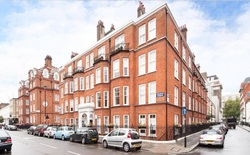




 RSS Feed
RSS Feed